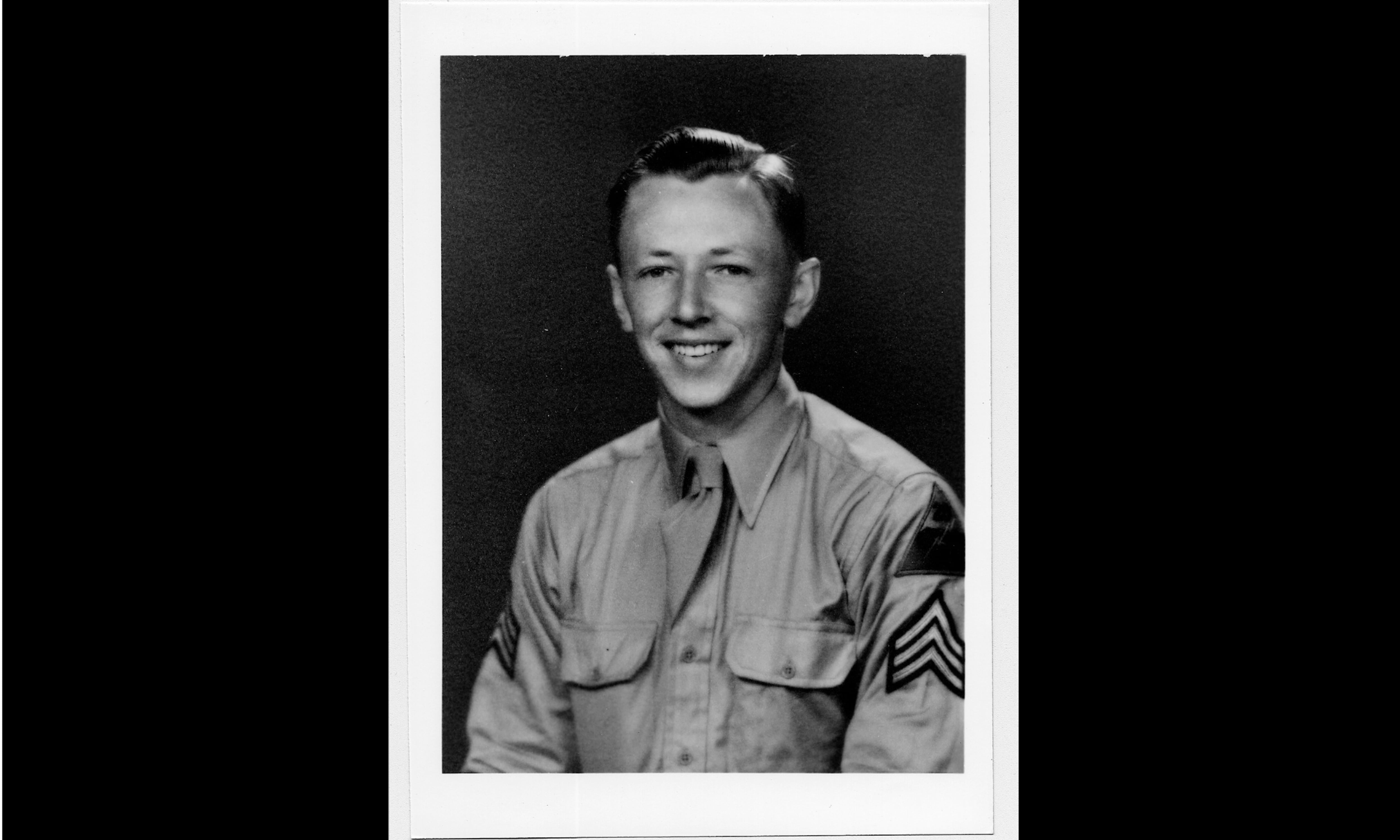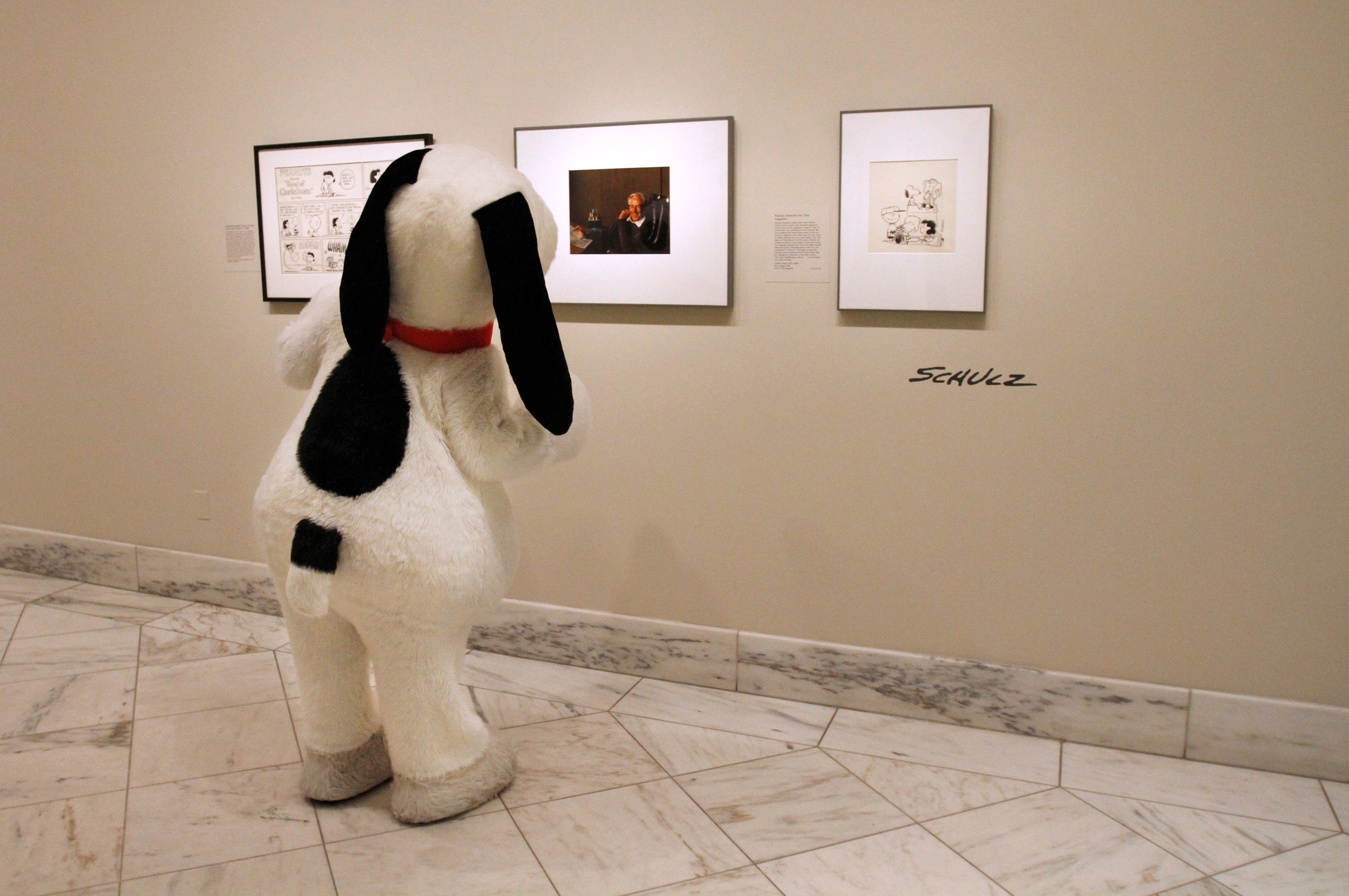It was a scene that played out countless times in homes across America during World War II: A young soldier, home on leave, making his tearful goodbyes to his family before shipping out to fight in some faraway land.
On Feb. 28, 1943, a 20-year-old draftee, who was inducted into the U.S. Army at Fort Snelling in his hometown of St. Paul, Minnesota, said a particularly painful farewell. For the very last time, he addressed his mother, who was near death from cervical cancer.
“Goodbye, Sparky,” said his bedridden mother, Dena, who was 48. “We’ll probably never see each other again.”
She died the next day while “Sparky” — the childhood nickname of Charles M. Schulz — was en route to Fort Campbell in Kentucky. The cartoonist who drew the popular “Peanuts” comic strip, which marks its 75th anniversary this month, was unable to return home for her funeral.
RELATED
Years later, Schulz reflected on that experience as a defining moment in his life — one that enabled him to project his own fragile emotions through the downtrodden world view of good ol’ Charlie Brown, the comic strip’s main character. It would also lead to the development of one of the most beloved illustrated figures of all time.
“The Army taught me all I needed to know about loneliness,” Schulz later recalled of the tears he shed in his barracks following Dena’s death.
“However, his mother’s passing while at basic training really had an impact on him. He was horribly lonely.”
Born Nov. 26, 1922, in Minnesota, Schulz was nicknamed “Sparky” by his uncle for a character in the “Barney Google and Snuffy Smith” comic strip. That connection to the funny papers would remain a constant in the youngster’s life. He dreamed of becoming a cartoonist and having a daily strip in the newspaper.
Those plans were interrupted by World War II. Schulz dutifully served in the U.S. Army with the 20th Armored Division, part of the III Corps, in battles across France, Belgium and Germany. He rose to the rank of staff sergeant and became a light machine gun squad leader. His division participated in the liberation of Dachau, though the future cartoonist and his comrades never entered the concentration camp.

According to Keane, Schulz likely suffered from undiagnosed PTSD. After the war, he was plagued by severe depression and paralyzing anxiety. The wartime trauma experienced by the sensitive illustrator left an indelible mark on his psyche, impacting his drawing and family life for the rest of his years.
“His wife wanted him to get therapy,” stated Keane, adjunct faculty for the School of Public Policy at Pepperdine University. “Schulz wouldn’t do it, though. He was afraid it would affect his creativity and he wouldn’t be able to draw ‘Peanuts’ anymore.”
Schulz later recalled three events during World War II that left a mark on him. One involved an encounter with German soldiers. The sergeant pointed his machine gun at them and pulled the trigger, though it didn’t fire because Schulz had failed to pull back the cocking handle. That’s when he realized the enemy troops were surrendering.
Another time was when he was handling a captured German luger. It went off in his hands and grazed the cheek of a combat medic standing in front of him. Both near-misses left him shaken and worrying about what might have been.
The third encounter involved a German village, where Schulz’s unit had been taking sniper fire. Army rules of engagement at the time dictated that the town be destroyed in retaliation for the attack. The cartoonist later admitted to being overwhelmed by memories of a “hysterical woman standing in the front yard while her house was on fire.”
With the end of the war, Schulz returned home, married and started a family. He worked as an art instructor while pursuing his dream of drawing a comic strip for newspapers. He initially started with a series of one-panel drawings called “Li’l Folks” for the St. Paul Pioneer Press, then was signed in 1950 by United Feature Syndicate to do a daily four-panel strip across the country.
However, Schulz had to make a few revisions before it could be syndicated. Because it was similar to the “Li’l Abner” comic strip, the name was changed to “Peanuts” — based on the popularity of the phrase “peanut gallery” used in the children’s TV series “The Howdy Doody Show.” Schulz never really liked the title but did what he had to do to get published.
The artist also needed a new name for one of his characters. In “Li’l Folks,” he had created a dog named Sniffy, but that was already taken by a pooch in another comic strip. Frustrated, Schulz struggled to come up with a clever creation for the canine.

Finally, he remembered the last few conversations he had with his mother. Dena’s cancer caused her significant pain, so she was given morphine to ease her suffering. The resulting hallucinations crept into conversations with her son. Dena spoke about getting better and returning to a normal life. Schulz knew it would never happen, but he indulged his mother.
Dena also spoke about getting a new dog. She had already picked out its name: Snoopy. Dena’s parents were Norwegian, and in their language, “snupi” meant “affection”. Schulz knew it was the perfect name for the character in his comic strip.
Snoopy made his debut on Oct. 4, 1950 — two days after “Peanuts” first premiered in newspapers. Two years later, the dog was given the ability to “speak” through “thought balloons.” As Snoopy donned a variety of alter egos and pursued fantasy-laden adventures, he grew in popularity to the point where the character soon dominated the comic strip, as well as network TV specials.
At its peak in 1975, “Peanuts” was read by more than 100 million people each day. Snoopy, of course, was a huge part of the success. The character generated millions of dollars in sales from greeting cards, plush toys, mugs, key chains, bedsheets and many more collectible items. He even became a symbol of hope during the Vietnam War, when American troops brandished Snoopy on helmets, tanks, trucks and other military gear.
Reflecting on the success of his determined dog, Schulz once said, “There’s another quality about Snoopy that I think makes the whole thing work. This is a quality of innocence combined with a little bit of egotism. You put those qualities together, and I think you have trouble, especially with Snoopy.”
America’s Favorite Beagle was also Schulz’s way of remembering his mother. He was extremely close to Dena, who strongly encouraged him to pursue his love of drawing. Having Snoopy appear almost daily in “Peanuts” helped honor her, whose death was a “loss from which I sometimes believe I never recovered,” he later stated. Schulz died at 87 in 2000, two days before his final “Peanuts” strip ran in newspapers around the world.


